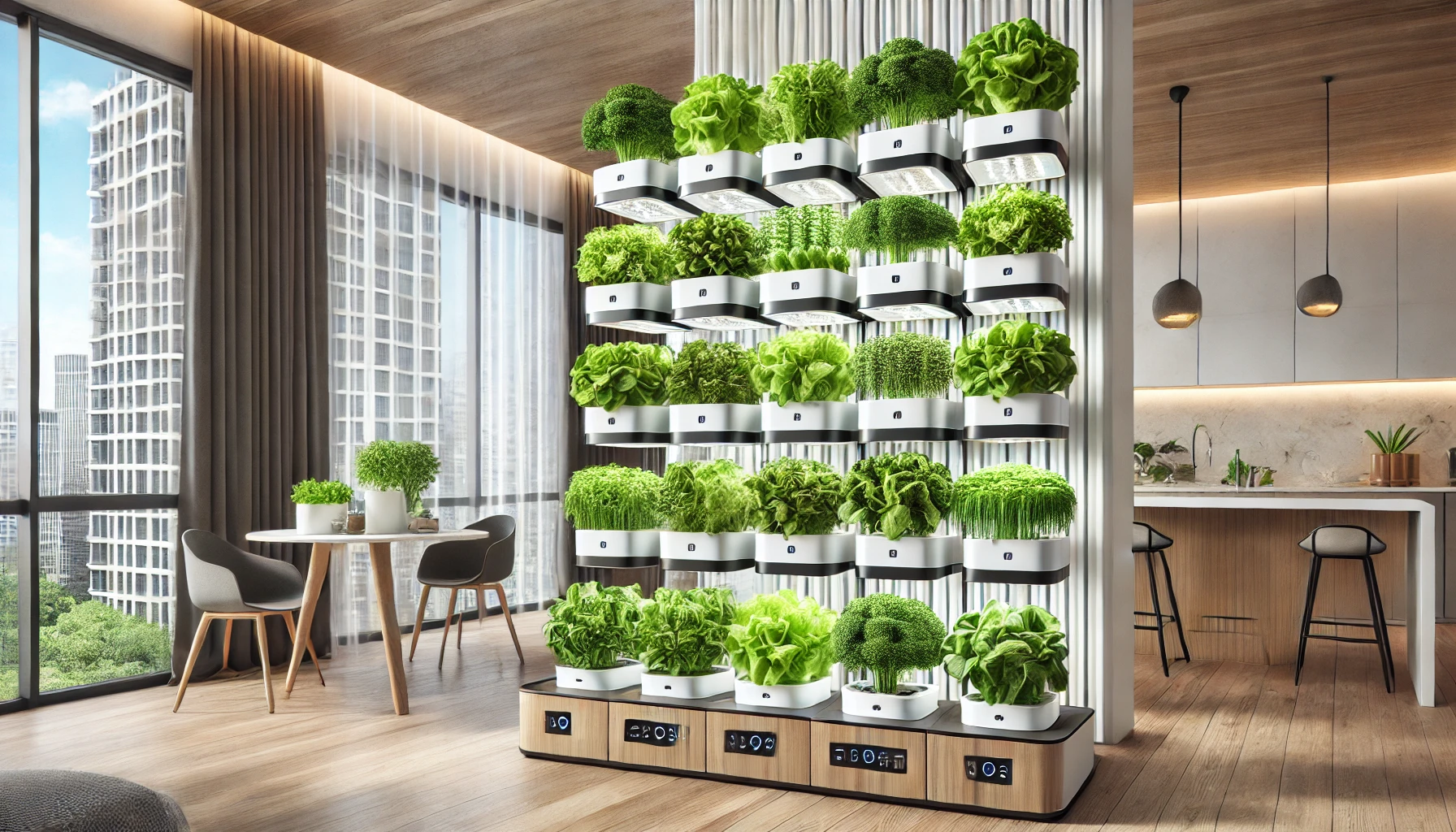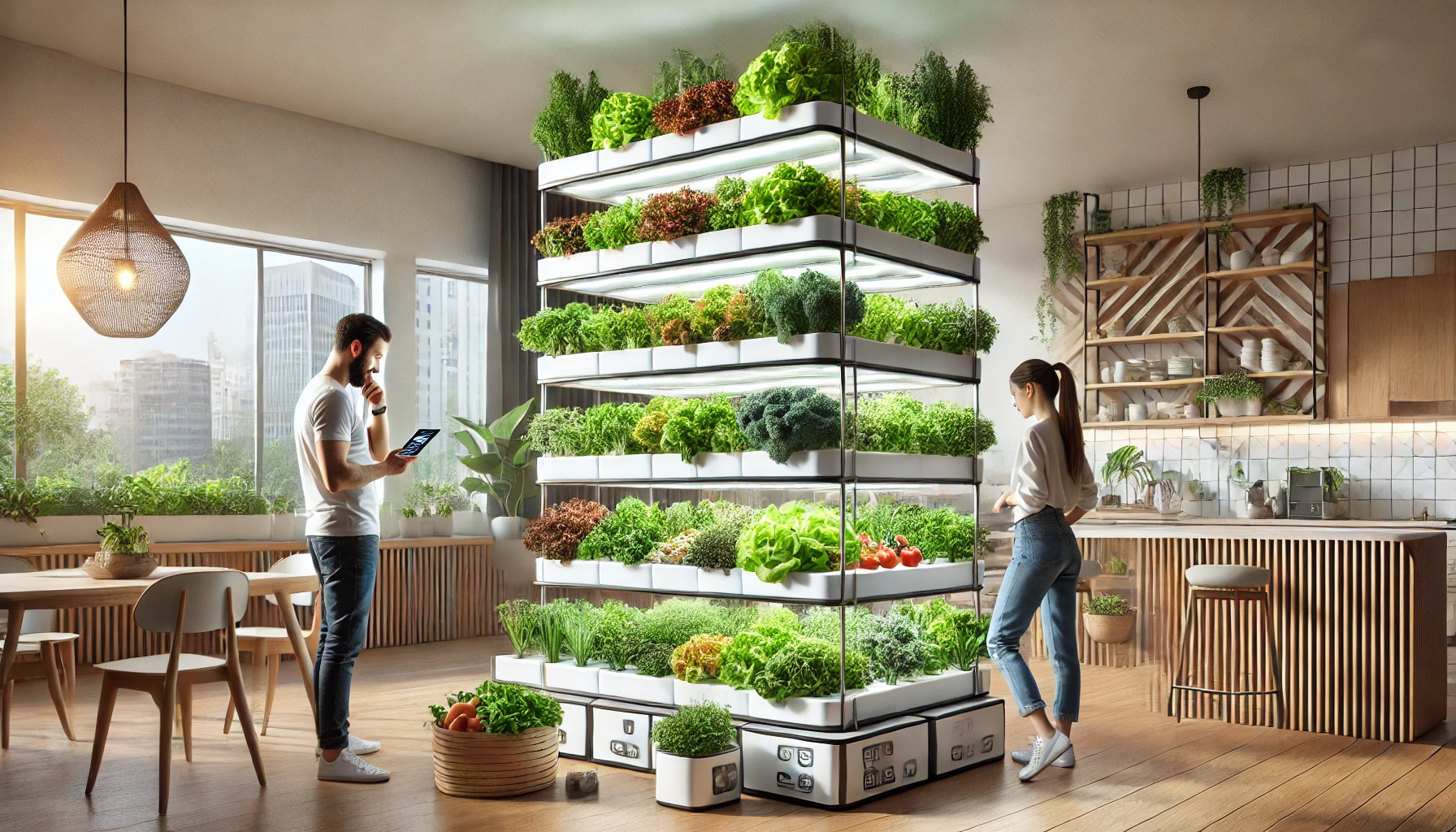Vertical hydroponic vegetable gardens are changing the game when it comes to sustainable farming, allowing anyone, even urban dwellers, to grow fresh produce in a limited space. The idea is simple—think of plant racks arranged vertically, enabling more plants to grow compared to traditional horizontal layouts. Urban cityscapes, where gardening space is scarce, have seen a revolution with these systems.
The journey of hydroponics dates back to the ancient Hanging Gardens of Babylon, but it’s only recently that this method has become accessible and viable for personal gardens. Instead of soil, plants thrive on nutrient-rich water, giving unprecedented control over the growing environment. Indoor gardeners can benefit from fast growth rates and higher yields, all while using less water.
Vertical systems emphasize efficiency and innovation. They make use of upward space, which is perfect for urban balcony farms or inside green walls. Picture salad greens, herbs, and even strawberries cascading along your apartment wall or in a compact backyard setup—it’s a win-win for sustainable living and convenient fresh produce.
In this article, I’ll cover the essential aspects of vertical hydroponic systems. We’ll explore what you can and can’t grow, understand the pros and cons, and figure out the best plants for maximum returns. Whether you’re a gardening rookie or a seasoned green thumb looking to modernize your approach, you’ll find useful tips and insights to help you embrace this futuristic gardening technique.
Setting Up Your Vertical Hydroponic System: A Step-by-Step Guide
Got your mind set on creating your personal paradise of greens? Let’s get cracking with setting up your vertical hydroponic system. The first step is choosing the right spot. Think about sunlight—natural light works wonders if you’re outdoors, but if not, LED grow lights will do the trick indoors.
You’ll need a few key components to get started, like a support structure or frame to hold your plant containers or towers. Then hook up a water reservoir and a pump to keep those nutrient solutions flowing smoothly to every plant. If you’re a newbie, consider starting small to get the hang of it—this lowers the stakes and heightens the fun.
Assembling the system might seem a bit daunting at first, but trust me, once you get the basics, it’s pretty straightforward. Most vertical systems come with user manuals that are quite handy. Ensure all parts fit tightly, and there’s no leakage because any mess would be a headache to clean up in confined spaces.
Here’s a nifty tip: Always have a checklist. Things like pH and EC meters, nutrient solutions, and a timer for the lights or water pump can sometimes be forgotten but are critical for your garden’s success. Seasoned hydroponic buffs know that keeping everything in check = happy, healthy plants.
Ready to introduce your plants? Start with easy-growers like leafy greens or herbs before moving on to trickier varieties. As you gain confidence, you can tweak strategies, testing different plant combinations. Remember, mistakes are just part of learning, so keep experimenting until you find what works for you.
Understanding What Vegetables Thrive (and Don’t) in Hydroponics
Not all veggies embrace the hydroponic life equally. Leafy greens like lettuce, spinach, and kale are your hydroponic superstars, thriving under such conditions like teenagers with unlimited phone data. Their shallow root systems and quick growth cycles are perfect for soilless wonders.
Herbs like basil, mint, and cilantro also love hydroponic gardens. They offer strong flavor punches and are a win for any urban chef. These plants don’t need tons of space or deep roots, making them perfect candidates for vertical systems.
While many plants love hydroponic systems, some are party poopers. Root vegetables like carrots and potatoes typically don’t get along with hydroponics. They need more soil-depth and space, which this setup just doesn’t offer.
Fruiting plants like tomatoes and peppers can be grown hydroponically but require more attention. Their taller growth and greater nutrient needs mean they’re not for the faint-hearted beginners. But with the right care, they yield juicy rewards.
Knowing what works and what doesn’t is crucial. Factor in available space, type of system, and how much time & love you can invest. Also, don’t shy away from experimenting. Who knows? Maybe under your tender touch, even a wayward vegetable can find a home in hydroponics.
Examining the Drawbacks: 5 Disadvantages of Hydroponics
Hydroponics might sound like the ultimate hack for greener living, but it’s not without its quirks and challenges. First up, the initial cost. Setting up a hydroponic system can hit the wallet harder than traditional gardening, mostly due to equipment like pumps and lights.
Keeping a close eye on the pH levels is absolutely crucial. Plants can be pretty picky about their Goldilocks zone, so you’ll need to monitor things regularly to ensure they stay just right. This requires a bit of know-how and can feel overwhelming for some.
System failures? Yeah, they’re a possibility. If your pump or timer decides to call it quits, plants won’t get their nutrients, which could spell disaster pretty fast. It’s wise to have backup plans and parts to avoid losing your entire garden to unforeseen glitches.
One thing many don’t think about until it’s too late is plant diseases and pests. Even without soil, plants aren’t immune. A closed system can actually make it harder to control outbreaks if they happen, as the problem can spread swiftly among your garden.
And let’s not forget, there’s a learning curve. Hydroponics isn’t just a set-and-forget method. It demands ongoing learning and tweaking to match plant needs and system hiccups. If you enjoy diving into new challenges, this could be a fun puzzle, but it’s not a hands-off hobby.
In the end, while hydroponics offers many rewards, entering this gardening world requires committing to its intricacies. Consider these challenges hurdles to jump over rather than roadblocks to stop you from experiencing the joy of your hydroponic harvests.
Vertical vs. Horizontal Hydroponic Systems: Which Reigns Supreme?
When it comes down to choosing between vertical and horizontal hydroponic systems, it really boils down to your needs and space. Vertical systems are all about maximizing upward space, ideal for when growing area is tight but you’d like a larger harvest.
With vertical setups, maintenance can be a bit trickier. Water needs to travel upwards, which sometimes means slightly more complex plumbing. Plus, taller systems may need more stability checks to ensure they don’t topple over.
Horizontal systems spread out over a flat surface, mimicking traditional soil gardens, and can be simpler when it comes to setting up and accessing plants. They’re easier on maintenance if you have ample horizontal space. It’s literally laying your plants out step by step, keeping an eye on them all fairly easily.
Growth efficiency is another key point. Vertical systems often have the edge in yield-per-square-foot, but horizontal might win in convenience and simplicity, especially if you’re a newbie.
Experts often suggest that beginners or those with lots of room might start with horizontal systems before venturing into the more complex vertical ones. But if space is your limiting factor, vertical is undoubtedly a smart choice.
Each has its own perks and pitfalls, and sometimes, it even makes sense to use a combination of both depending on your space and crops. You’ll find the structure that suits your style and maxes out your garden potential.

Exploring Profitable Options: Best Plants for Hydroponic Cultivation
When it’s all set up, the next big question is, what should you grow to get the most bang for your buck? Leafy greens like spinach and kale often top the charts in terms of profitability. They’re in high demand almost all year round, making them a safe bet for consistent income.
Herbs are another powerhouse in hydroponic systems. Basil, mint, and parsley don’t just grow fast; they fetch a great price and have a strong market thanks to fresh culinary and medicinal uses. Restaurants and local markets love the smell and taste of fresh, locally grown herbs.
Microgreens are a hot trend in the culinary world, known for their rich flavor and nutrient density. They’re a quick turnaround crop, meaning you can grow and sell them fast, maximizing profitability. Their compact growth also aligns seamlessly with vertical systems.
Believe it or not, even some fruits like strawberries can be lucrative. While they require a bit more careful management, they produce a sweet payoff with their high market price, especially when grown out of season.
Understanding the market is crucial—do a quick scan of local demands and niche markets before planting. Buyers often appreciate unusual or unique produce, and if you can deliver consistently high-quality crops, you’ll quickly build a loyal customer base. Gaining insights into what stores, restaurants, or even individual consumers desire can turn your green thumb into a profitable venture.
Conclusion: The Way Forward for Sustainable Farming and Urban Living
The rise of vertical hydroponic systems represents more than just a gardening trend; it’s a leap toward a sustainable future. This method harnesses innovation to tackle space constraints and resource management, making it a preferred choice for urban settings.
Vertical hydroponics isn’t just about growing plants—it’s about cultivating a new way of thinking. Whether you have a small balcony or a cozy corner in your living room, the potential to grow fresh, healthy produce is right at your fingertips.
Looking ahead, technological advancements in hydroponics will likely make systems even more efficient and user-friendly. As cities continue to grow and space becomes increasingly precious, these compact gardens may become a staple of urban life.
If you’re curious, don’t hesitate to jump in. Embrace the learning curve, experiment with different plants, and share your greenery journey with others. Connecting with fellow garden enthusiasts and communities will provide support and inspire new ideas.
Join the wave of city dwellers who are transforming limited space into lush oasis, contributing to healthier living and a greener planet. Your effort might seem small, but collectively, it signifies a monumental shift towards more sustainable urban lifestyles.


This article is a fantastic overview of vertical hydroponic gardening!
I appreciate the detailed guide on setting up the system and the insights into which plants thrive in hydroponic environments.
It’s inspiring to see how technology and innovation can turn limited spaces into productive gardens.
It’s clear that with the right approach and a bit of experimentation, vertical hydroponics can be a rewarding endeavor for both beginners and experienced gardeners.
Great job on shedding light on this innovative method of gardening!
Thank you so much for your thoughtful and encouraging comment! 🌱 I’m thrilled to hear that you found the article helpful and inspiring. Vertical hydroponics truly is an amazing way to make the most of limited spaces, and it’s exciting to see how technology continues to open up new possibilities for urban and small-space gardening.
Your mention of experimentation is spot-on—every setup can be a little different, and finding what works best for your space and plants is part of the fun! If you have any specific questions or want to share your own experiences with vertical hydroponics, I’d love to hear about them. Thanks again for your kind words!